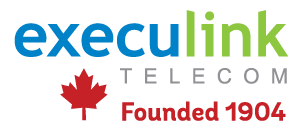Operational Efficiency: Tips and Strategies for Small Businesses
March 17, 2023 Category: Business Services
In today’s fast-paced business environment, small businesses face a number of challenges that can make it difficult to remain competitive. Limited resources, tight budgets, and increasing competition all contribute to the need for small businesses to operate as efficiently as possible. Operational efficiency refers to the ability of a business to maximize output while minimizing inputs, such as time, money, and resources. In this blog post, we’ll explore practical advice and insights for small businesses looking to improve their operational efficiency, and how telecom solutions can support these efforts. We’ll also discuss why operational efficiency is so critical for small businesses in today’s fast-paced business environment.
Assess Your Current Processes
The first step to improving operational efficiency is to assess your current processes. This involves identifying inefficiencies, bottlenecks, and areas for improvement. Look for tasks that are taking too much time, resources, or money, and find ways to streamline or automate them. For example, consider how much time and effort your employees spend on manual data entry or communication. These are common inefficiencies that can be easily addressed through automation. By implementing a cloud-based customer relationship management (CRM) system or a cloud-based phone solution like Hosted Phone, you can automate data entry, streamline communication, and improve the process, freeing up valuable time and resources for other tasks.
Invest in Training and Development
Another key factor in improving operational efficiency is investing in the training and development of your employees. This involves providing ongoing training to ensure that your employees are equipped with the skills and knowledge they need to perform their jobs effectively and efficiently. For example, telecom solutions such as video conferencing and online training platforms can be used to provide remote training and development opportunities for employees, regardless of their location or schedule. This can help to improve employee engagement and performance, leading to increased operational efficiency.
Embrace Technology
Technology is a key enabler of operational efficiency, and small businesses can benefit from a wide range of telecom solutions to streamline and automate their processes. The following infographic summarizes some of the most common technology solutions used by businesses to enhance operational efficiency.
![]()
Business Internet Services: Fast and reliable Internet connectivity allows businesses to communicate with customers and employees across multiple locations, reducing the need for travel and in-person meetings, and enabling remote work.
Improve Point of Sale (POS) transactions with faster Internet: One of the pain points for many small businesses is the efficiency of their POS transactions. Slow or unreliable Internet connections can lead to delays in processing payments and leave customers frustrated. By investing in faster and more reliable Internet services, you can enhance your POS transactions and improve customer satisfaction.
Cloud-based storage and file-sharing platforms: Allow businesses to store and share files securely in the cloud, reducing the need for physical storage and allowing easy access to files from anywhere at any time. Automated backup and syncing can also ensure that files are always up-to-date and accessible to authorized parties.
Digital and Cloud-based phone solutions: Provide flexible and scalable communication options, allowing employees to easily make and receive calls, and manage their communications from any device, anywhere. Features such as voicemail-to-email, automated call forwarding, and auto-attendants can help to streamline communication and automate certain tasks.
Mobile plans: Provide employees with the flexibility to work on the go while staying connected and productive. With mobile devices and apps, employees can easily access files, communicate with team members, and collaborate on projects from anywhere, at any time.
Video conferencing and online collaboration tools: Allow employees to collaborate remotely, reducing the need for in-person meetings and travel. Features such as screen sharing, virtual whiteboards, and chat messaging can help to streamline communication and automate certain tasks.
Customer relationship management (CRM) systems: Help businesses to automate tasks such as data entry, lead management, and customer communication. By organizing and automating customer data, businesses can streamline sales and marketing processes, and ensure that customer interactions are consistent and efficient.
Network Solutions: Connect businesses and branches to their customers with secure and reliable networking solutions, streamlining communication and ensuring that data is transferred efficiently and securely between locations.
Data Center Solutions and Colocation – Provide businesses with secure and reliable storage and computing resources, reducing the need for on-premise equipment and maintenance. With cloud-based servers and storage, businesses can automate tasks such as data backup and recovery, and scale their infrastructure to meet changing demands. Colocation services can also be used to provide secure physical space for servers, allowing businesses to offload the maintenance and management of their own data center equipment.
Internet of Things (IoT) devices and sensors: These can automate data collection and analysis for various business processes, such as inventory management, predictive maintenance, and energy management.
Artificial Intelligence (AI) and Machine Learning (ML) technologies: These can automate tasks such as data analysis, customer service, and fraud detection, among others.
Virtual and Augmented Reality (VR/AR) technologies: These can automate and streamline various training and development processes, such as employee onboarding, product demonstrations, and customer support.
Unified Communications (UC) solutions: These integrate voice, video, messaging, and collaboration tools into a single platform, allowing employees to communicate and collaborate in real-time from any location. For example, Execulink’s Direct Routing for Microsoft Teams solution allows businesses to integrate their Teams environment with a business phone system, providing enterprise-grade voice capabilities and enabling employees to make and receive external calls from their Teams app on any device, from anywhere. By unifying communication and collaboration tools, businesses can streamline their processes and improve productivity.
By embracing technology, small businesses can reduce manual tasks, improve communication and collaboration, and streamline their overall operations, helping them to achieve greater operational efficiency and success.
Outsource Non-Core Functions
Small businesses can also improve operational efficiency by outsourcing non-core functions to third-party providers. This includes functions such as accounting, payroll, and human resources, which can be time-consuming and complex for small businesses to manage in-house. By outsourcing these functions, small businesses can focus on their core competencies, while benefiting from the expertise and efficiency of third-party providers. Telecom solutions such as video conferencing and online collaboration tools can also be used to facilitate communication and collaboration with outsourced providers, ensuring that they are integrated seamlessly into the business.
Monitor and Measure Performance
Finally, it is important to monitor and measure the performance of your business to ensure that you are achieving your goals and making progress toward improving operational efficiency. This involves setting clear metrics and goals, tracking progress against these metrics, and making adjustments as needed. Telecom solutions such as data analytics and business intelligence tools can be used to monitor and measure performance, providing valuable insights and actionable data to inform decision-making and improve operational efficiency.
Operational efficiency is critical for small businesses looking to remain competitive in today’s fast-paced business environment. By assessing current processes, investing in training and development, embracing technology, outsourcing non-core functions, and monitoring and measuring performance, small businesses can improve their operational efficiency and achieve their goals. Telecom solutions play a critical role in supporting these efforts, providing the tools and technologies needed to streamline and automate operations and drive success.
However, it’s important to remember that operational efficiency is not a one-time effort but an ongoing process. Small businesses must continuously strive to improve their processes and operations to remain competitive and successful. By implementing the tips and strategies discussed in this blog post and leveraging telecom solutions, small businesses can build a solid foundation for success and succeed in today’s fast-paced business environment.
Ready to improve your small business’s operational efficiency? Learn more about the telecom solutions discussed in this blog post by visiting our website or contacting us at 1-877-561-6771. Our team of business experts can help you find the right solutions to streamline your operations and drive success.
Streamline your operations now!





